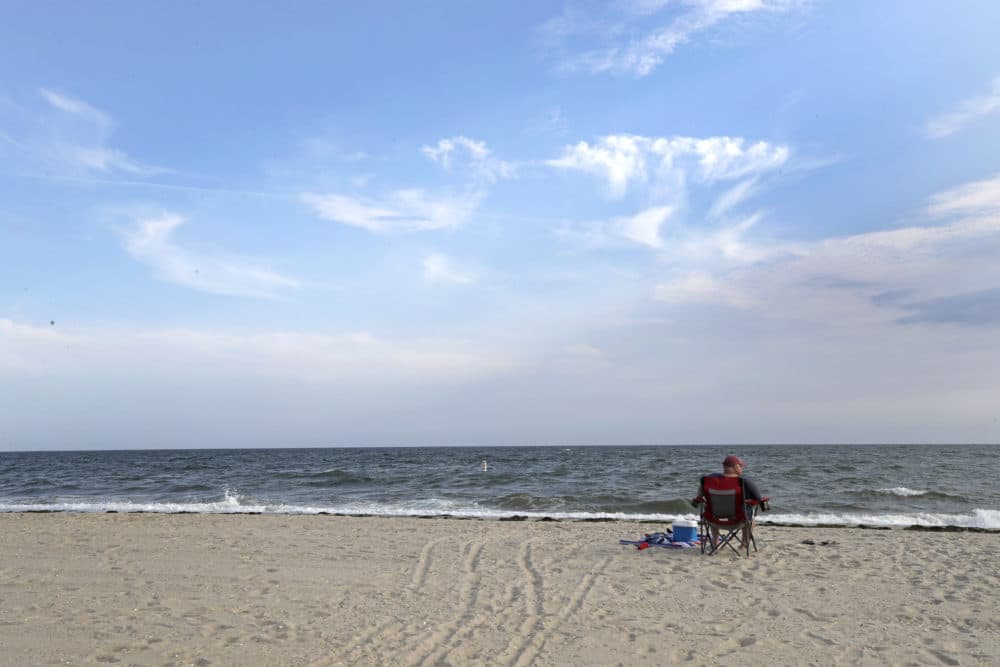Advertisement
Feds: Vineyard Wind Could Be Part Of 2,000 Turbines Off East Coast

Vineyard Wind I, the project that could be the first major wind farm off the American coast, took an incremental step forward in the permitting process this week when federal regulators published a long-awaited study of the potential impacts of the project and the East Coast's rapidly-growing offshore wind sector.
The U.S. Department of the Interior's Bureau of Ocean Energy Management (BOEM) this week issued a supplement to its draft Environmental Impact Statement (EIS) for the 800-megawatt Vineyard Wind I project, a joint venture of Copenhagen Infrastructure Partners and Avangrid Renewables seeking to build an 84-turbine wind farm 15 miles south of Martha's Vineyard. A 45-day public comment period begins Friday.
"This supplement analyzes reasonably foreseeable effects from an expanded cumulative activities scenario for offshore wind development, previously unavailable fishing data, a new transit lane alternative, and changes to the proposed Vineyard Wind 1 Project," the document says.
Last August, BOEM sent shockwaves through the offshore wind industry with its plan to withhold the final environmental impact statement for Vineyard Wind I while it studies the wider impacts of a sector that is hoping to ramp up in Northeast and mid-Atlantic waters also used by the fishing sector.
BOEM said in the new document that the "scope for future offshore wind development is greatly expanded from what was considered" when it published the initial draft EIS in December 2018. Now, having analyzed the full extent of "reasonably foreseeable offshore wind development" in the Atlantic, BOEM said it expects approximately 22 gigawatts of offshore wind development in total.
"The level of development expected to fulfill 22 gigawatts of offshore wind energy would result in the construction of about 2,000 wind turbines over a 10-year period on the Atlantic [Outer Continental Shelf], with currently available technology," the agency said.
The Trump administration, which lawmakers and some in the energy world have accused of being prejudiced against wind developments, in February announced a new — and longer-than-anticipated — timeline for the ongoing federal review of the Vineyard Wind I project and the offshore wind sector generally. The new timeline, the developer said, put the expectation that the 84-turbine wind farm would be generating electricity in 2022 out of reach.
A decision on a final permit for Vineyard Wind I is now expected by Dec. 18, 2020. Before the feds launched the broad review of wind projects, a decision on permit approval had been expected by Aug. 16, 2019.
On Friday, BOEM plans to kick off a 45-day public comment period on the supplement to the draft EIS. Beginning June 26, the agency will conduct five virtual public meetings during which the public can "learn more about the review process, EIS schedule, potential impacts and proposed mitigations of the proposed project, and ask questions as well as provide oral testimony."
Advertisement
"Public input is a core pillar to the renewable energy program and the expanded cumulative scenario is a direct result of stakeholder feedback received by our agency," Acting BOEM Director Walter Cruickshank said. "This expanded cumulative scenario is intended to better understand future impacts of the offshore wind industry while being responsive to the concerns of other ocean industries."
A Vineyard Wind spokesman said Thursday that the company is pleased that BOEM has published its supplement to the draft EIS and looks "forward to engaging with the agency and the many different stakeholders as we continue to make our way through this important public process."
One group of stakeholders that will be sure to be involved in the process as it moves forward is the commercial fishing industry, which has voiced displeasure with some aspects of the project. BOEM's supplement concluded that "major cumulative effects could occur on commercial fisheries" under the proposed Vineyard Wind I plan and all alternatives "due to the presence of structures [impact-producing factors] when combined with ongoing and future impacts as a result of climate change and reduced stock levels as a result of fishing mortality."
In a press release Thursday, BOEM said it "recognizes that fishing is an important use of federal waters that will be considered in its decision-making."
"BOEM will engage with commercial and recreational fishermen to ensure a full understanding of potential impacts. BOEM will solicit input from the fishing community for project siting, best management practices, research, and monitoring," the agency said.
Tension between the commercial fishing industry and offshore wind developers has been a constant thread as the new industry looks to establish its roots in the United States. Most recently, the two sides were at odds over the proposed layout of turbines for offshore wind projects.
The five developers that hold leases for offshore wind sites off New England made a proposal late last year to orient their turbines in fixed east-to-west rows and north-to-south columns spaced one nautical mile apart.
Last month, the U.S. Coast Guard sided with the developers over the objections of commercial fishing interests that had pushed for six designated lanes, each four nautical miles in width, through which they could travel without encountering any of the hundreds of turbines that could some day populate the waters.